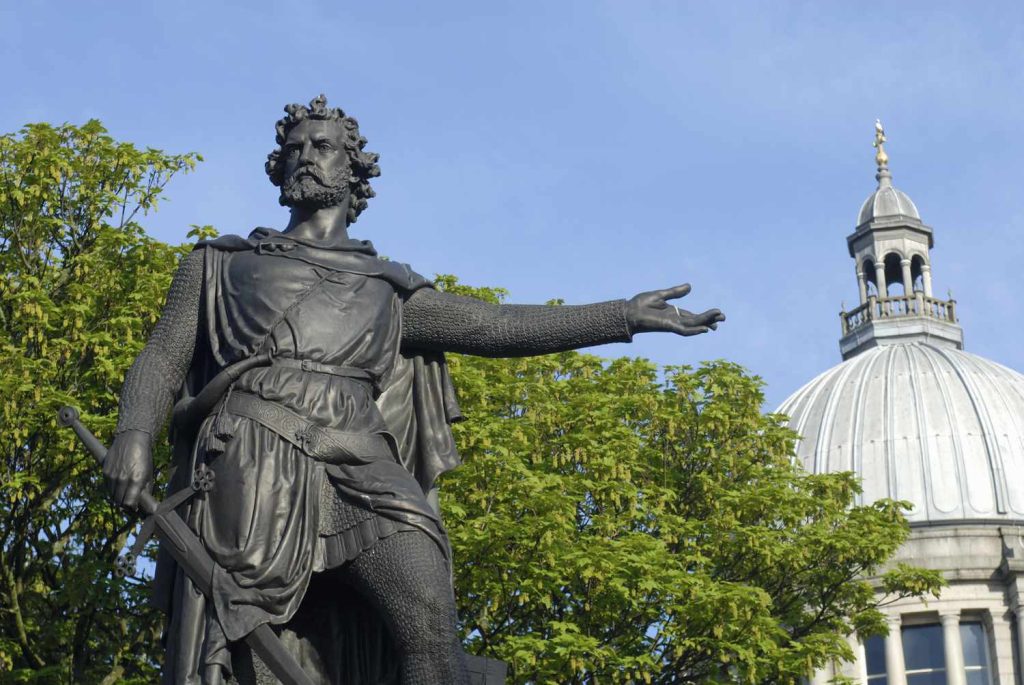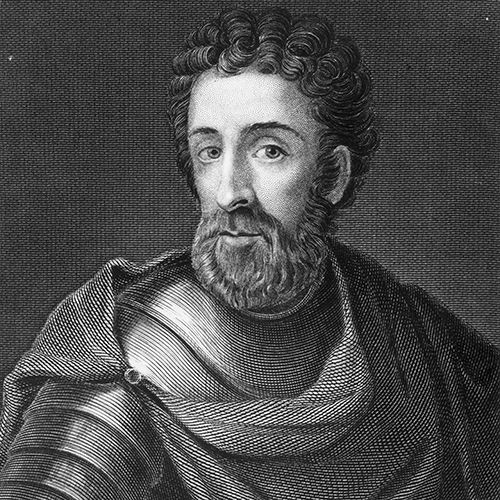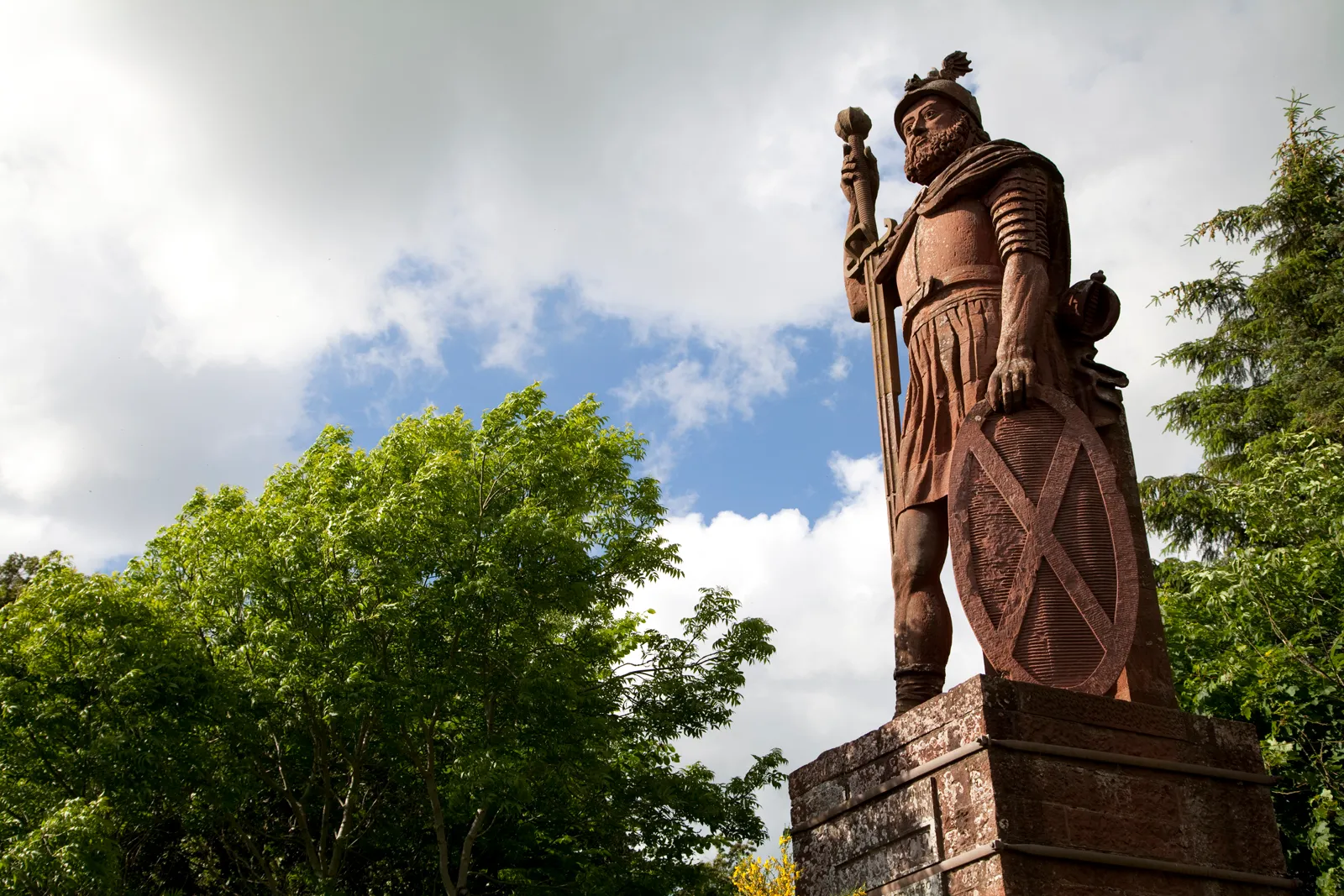There is no historical evidence to suggest that William Wallace, the Scottish knight and leader, had any children. Wallace is best known for his role in the Scottish Wars of Independence against English rule in the late 13th century. He played a significant part in the Battle of Stirling Bridge in 1297, a notable Scottish victory.
Unfortunately, Wallace’s life is not extensively documented, and many aspects of his personal life, including whether he had any children, remain unclear or unknown. The historical records from that period are incomplete, and much of what is known about Wallace comes from later chronicles and legends, making it challenging to provide definitive information about his family life.
What Were The Key Influences And Events In The Early Life Of William Wallace?

We don’t know a lot about William Wallace’s early life because there aren’t many historical records about where he was born and how he grew up. Nevertheless, there are some key aspects and historical context that can provide a deeper understanding of this period.
Background Information on William Wallace’s Birth
Birth Date and Place
William Wallace is believed to have been born around 1270, though the exact date is uncertain. His birthplace is traditionally thought to be Elderslie in Renfrewshire, Scotland. Elderslie is a small village, and Wallace is often referred to as “William Wallace of Elderslie.”
Noble Heritage
While Wallace did not belong to the highest nobility, his family had some degree of land and social standing. His father, Sir Malcolm Wallace, was a minor landowner, and the family likely had connections to the Scottish nobility of the time.
Upbringing
Turbulent Times
Wallace’s formative years were marked by a Scotland in political and social turmoil. The late 13th century was a period of conflict between Scotland and England, with disputes over land, succession, and autonomy. This backdrop significantly influenced Wallace’s later actions and his fervent desire for Scottish independence.
Educational Background
Details about Wallace’s formal education are scant. Given his social status, it’s likely that he received at least basic education, possibly in the form of training in martial skills and governance. The turbulent times may have also contributed to Wallace’s early exposure to the harsh realities of conflict and power struggles.
Impact of the Death of His Father
Wallace’s life took a turn when his father, Sir Malcolm Wallace, was killed in a conflict with the English. This event likely played a crucial role in shaping Wallace’s attitudes toward the English crown and fueled his desire to resist English rule in Scotland.
Outlaw Status
Following the death of his father, Wallace became an outlaw, possibly due to his involvement in acts of resistance against English authority. This period of his life, often portrayed in legends and ballads, contributed to the formation of his legendary status as a guerrilla fighter and defender of Scottish independence.
Historical Context
The Wars of Independence
Wallace’s early life unfolded during the First War of Scottish Independence (1296-1328). This conflict was characterized by Scotland’s struggle for independence from English rule, triggered by the annexation of Scotland by Edward I of England.
Role of Scottish Nobility
The Scottish nobility was divided during this period, with some siding with the English crown for various reasons. Wallace emerged as a prominent figure rallying those who sought to resist English domination, earning support from both nobles and commoners.
Who Was William Wallace’s Wife?
William Wallace’s marriage and personal life are not well-documented in history, making it a bit of a mystery. Many believe he was married to a woman named Marion Braidfute, who was part of a noble Scottish family.
However, we don’t know much about when or how they got married. The lack of clear information is because, back in those days, they didn’t keep detailed records like we do now.
Some historians think that the stories about Wallace’s personal life might be a bit exaggerated or made more dramatic for storytelling. The time when Wallace lived, especially with all the wars and unrest, would have made it tough for him to have a stable family life.
People are still looking into historical records to find more details about William Wallace’s marriage. It’s an ongoing effort to uncover more about this interesting part of his life.
What Is William Wallace Known For?

William Wallace is primarily known for his role as a Scottish knight and military leader who played a key part in the First War of Scottish Independence against English rule in the late 13th century.
Leadership in the Scottish Wars of Independence
Wallace emerged as a prominent leader during the early stages of the First War of Scottish Independence (1296-1328). He became a symbol of resistance against English oppression and played a crucial role in the Scottish efforts to regain independence.
Battle of Stirling Bridge (1297)
One of the most significant events associated with William Wallace is the Battle of Stirling Bridge in 1297. In this battle, Wallace and his forces achieved a notable victory over the English army led by Edward I. The strategic success at Stirling Bridge demonstrated Wallace’s military acumen and bolstered Scottish morale.
Guardianship of Scotland
Following the victory at Stirling Bridge, William Wallace was appointed Guardian of Scotland, a position of leadership entrusted with protecting the kingdom’s interests during the absence of a reigning monarch. Wallace served as a de facto leader, representing Scottish resistance against English domination.
Symbol of Scottish Independence
William Wallace became an enduring symbol of Scottish resistance and patriotism. His efforts to defend Scotland against English rule contributed to the creation of a national identity and the aspiration for independence, which continued to inspire future generations.
Capture, Trial, and Execution
Despite his military successes, Wallace faced challenges, and he was eventually captured by the English in 1305. Following a trial, he was executed in a brutal manner, becoming a martyr for the cause of Scottish independence.
Legacy in Popular Culture
The life and exploits of William Wallace have been romanticized and immortalized in various forms of literature, including poems, ballads, and later historical novels. Perhaps most notably, the 1995 film “Braveheart,” directed by and starring Mel Gibson, brought Wallace’s story to a global audience, although the film takes significant creative liberties with historical accuracy.
FAQ
Where is William Wallace’s head now?
The exact location of William Wallace’s head is not known. After his execution in 1305, his head was placed on a pike atop London Bridge, but its current whereabouts remain a historical mystery.
Who saved William Wallace?
No one saved William Wallace from his execution. He was captured by the English in 1305, subjected to a trial, and subsequently executed.
Where is William Wallace’s sword?
The specific location of William Wallace’s sword is unknown. It is not on public display, and its whereabouts remain a subject of historical speculation.
Did William Wallace have any family?
Details about William Wallace’s family are limited in historical records. His father, Sir Malcolm Wallace, is mentioned, but specific information about other family members is scarce.
Who is the hero of Scotland?
William Wallace is often considered a hero of Scotland for his role in the First War of Scottish Independence and his efforts to resist English rule during the late 13th century.
Who was William Wallace’s best friend?
Historical records do not provide information about a specific best friend of William Wallace. His close relationships, if any, are not well-documented.
Who were William Wallace’s enemies?
William Wallace’s primary enemies were the English forces led by King Edward I during the Scottish Wars of Independence in the late 13th century.
Why is William Wallace still famous?
William Wallace is still famous due to his iconic role in the Scottish Wars of Independence, symbolizing resistance against oppression. His story has been romanticized in literature and popular culture, most notably in the film “Braveheart.”
Did William Wallace have a pet?
There is no historical evidence to suggest that William Wallace had a pet. Historical records primarily focus on his military and political activities.
Did Robert the Bruce betray William Wallace in real life?
The historical records do not provide clear evidence of betrayal by Robert the Bruce. The complex relationship between Wallace and Bruce is a subject of historical debate and interpretation.
Final words
In conclusion, the question of whether William Wallace had children remains uncertain due to the lack of clear historical evidence. While there are some local traditions and oral accounts that suggest connections to his family, historians approach these claims with caution. The limited records and historical challenges make it difficult to confirm or refute the speculation about Wallace’s descendants. As a result, the details of William Wallace’s family life continue to be a topic of historical mystery and debate.











